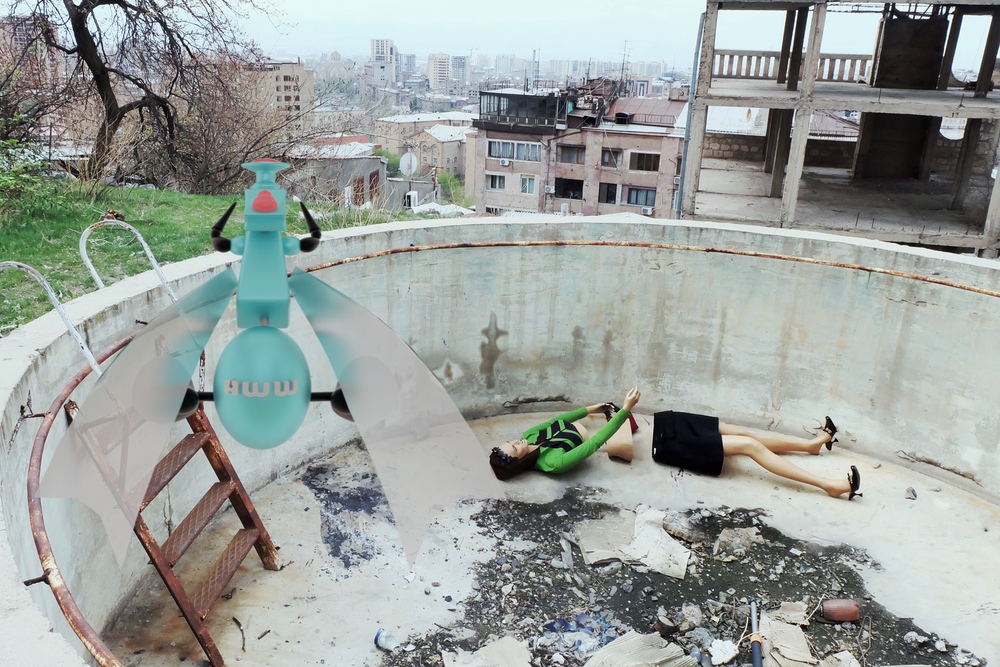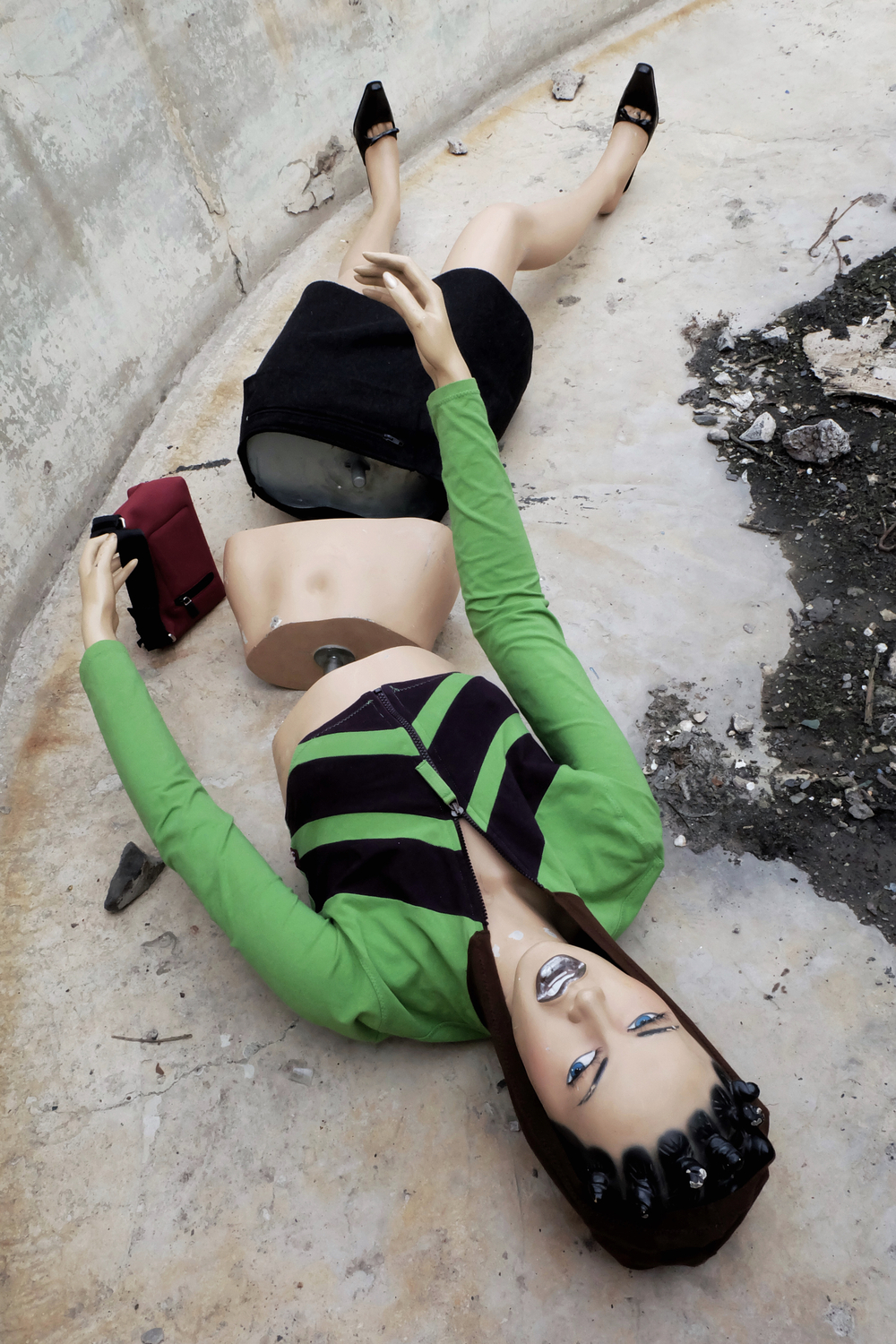Daria Atamanovskaya
“Synthetic Souls” by Daria Atamanovskaya
Critical Review by Anna Gvozdeva
Daria Atamanovskaya’s Synthetic Souls unfolds as a quietly devastating reflection on the emotional and existential aftermath of technological progress. Rather than imagining a triumphant future in which humans and machines coexist, the project inverts familiar science-fiction narratives: here, artificial beings have already failed. Their promise of seamless integration has collapsed, leaving behind discarded bodies—mannequin surrogates for machines who never found a place in the world built for them. What emerges is a poetic study of abandonment, alienation, and the violence of societal indifference.

The photographs are staged in neglected urban spaces—an empty, cracked swimming pool, rusted metal, crumbling concrete, scattered debris. This setting is not incidental; it reads as a metaphor for a future that has aged prematurely, a world that has already given up on its own inventions. The peeling surfaces, muted earth tones, and industrial textures create a visual language of decay. Against this backdrop, the glossy artificial bodies appear unsettlingly pristine, suspended between seduction and grotesque unease. Their immaculate makeup and fashionable clothing, styled by Lisa Niroba, emphasize the tragic irony of their existence: these figures were built to be seen, admired, displayed—yet no one is looking.

Atamanovskaya’s use of mannequins is conceptually precise. They embody the uncanny valley without the need for digital manipulation—they imitate humanity but lack agency, interiority, or voice. Limbs are detached, torsos separated, faces frozen in expressions of joy or indifference that no longer correspond to any lived experience. This fragmentation suggests both literal and psychological dismemberment: the dream of synthetic consciousness has not only failed technologically but also metaphysically. The “souls” promised by futurist narratives remain unrealized.
The project’s most striking tension lies in its oscillation between humor and tragedy. A mannequin leg still confidently wearing a high heel, or a torso clutching a handbag, borders on absurdity. Yet the absurdity wounds rather than entertains. These gestures evoke attempts at belonging—fashion, posture, beauty rituals—performed without understanding or reward. Clothing, as the artist notes, historically functions as a tool of identity construction, signaling community, aspiration, and selfhood. Here, fashion becomes a symbol of yearning, a costume for a role machines were never permitted to play.

The collaboration with 3D artist ashoka3dd extends the project beyond static documentation into speculative world-building. The inclusion of a hovering digital drone—playful, almost naïve in form—reinforces the disconnect between technological optimism and lived reality. It observes but does not intervene, functioning like a witness or archivist of failure. Its pastel palette contrasts sharply with the desaturated environment, highlighting the broken promise of a bright, frictionless future.
Formally, Atamanovskaya demonstrates a deliberate restraint. The compositions are uncluttered, allowing the viewer to linger on physical details: chipped paint on mannequin skin, twisted metal, shadows that mimic human silhouettes. The photographs are contemplative rather than sensational, refusing narrative closure. No human presence appears, yet humanity haunts every frame—through architecture, consumer objects, and the aspirational aesthetics of the discarded bodies. The absence becomes accusatory: Who created these beings? Who abandoned them?

Synthetic Souls ultimately operates as a critique not of technology itself, but of the social structures that produce and discard both machines and people. In its feminist and queer undertones, the work questions who is granted belonging, who is labeled “other,” and who remains perpetually outside the frame of community. The project suggests that exclusion—whether directed at artificial intelligence, migrants, marginalized identities, or even the human body—is not a glitch, but a systemic inevitability of contemporary culture.
Atamanovskaya’s images refuse spectacle. Instead, they offer quiet mourning, ethical provocation, and a renewed sense of responsibility. Synthetic Souls does not ask whether machines can become human, but whether humanity can recognize the consequences of its own desires. In that shift, the work gains its profound emotional and philosophical force.

Leave a Reply